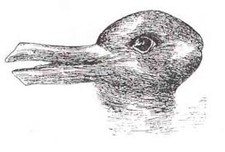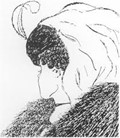The Art and Science of Reframing (seeing things differently)
Changing the way we think… about the things we see.
Stuart Shanker once said, “If you see a child differently, you’ll see a different child.”
Take a look at the following images:
Do you see bird or a rabbit?

Do you see a young woman shying away, or a downcast looking woman?
Looking at things differently, will help you see different things. As simple a statement as that is, it holds very true when you begin to consider that the behaviours we see, although often incorrectly labeled as “misbehaviours” or “poor choices” are really stress responses and not choices at all.
In terms of our evolution as human beings, we developed the ability to detect threats in our environment as a matter of survival. We are primed to be vigilant. As a species that is how we survived – by avoiding or escaping threats and seeking/finding safety.
Our brains developed hierarchical structures that facilitate our day to day lives. We have a brain stem that controls involuntary functions such as respiration & circulation, a cortical structure that provides us with the ability to evaluate, plan, and judge our perceptions, and an intermediary limbic system where memories are stored and reactions such as Fight or Flight are triggered. Threats are anything that place a demand on our energy.
We should also easily understand that our days are filled with periods when we feel abundantly energetic, as well as times when we feel completely drained. Also times when we are engaged and inquisitive, or overwhelmingly stressed. Consider now the response of someone who is energetic and enthusiastic vs. someone who is depleted, and anxious when presented with an additional challenge. Do you think the two responses would be similar? Hardly! Children also experience energy and tension highs & lows. Their reactions in high tension/low energy states are far less a choice than merely a survival instinct to evade or conquer the perceived threat, which may simply appear to you as a request for them to complete a task or chore.
Science tells us how perceived threats generate reactions in our limbic system. Seeing these reactions with “soft eyes” as stress responses and creating a sense of safety to help self-regulate those responses requires artistry.







Leave A Comment